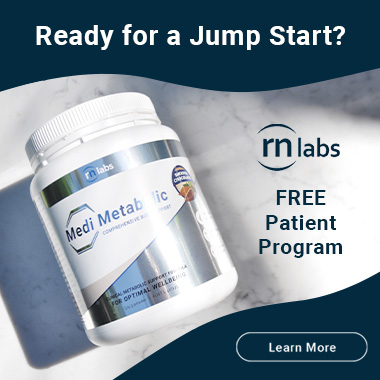Volume 33 Issue 3
Editorial
Susan Arentz
For referencing Arentz S. Editorial. The Australian Journal of Herbal and Naturopathic Medicine 2021;33(3):104-106.
DOI https://doi.org/10.33235/ajhnm.33.3.104-106
As are many of you, I write this editorial as a home-based naturopath, in Sydney lockdown, keeping myself, family and friends as safe as possible in the coronavirus pandemic, earnestly waiting for vaccination rates to rise. Home practice has limited clinic consults to being online, conferences to virtual platforms, and student supervision via zoom, and the lockdown presents enormous challenges for ongoing clinical trials. On the up-side though, analyses, writing, submitting and peer reviewing remains the same, and lockdowns save us travel time, reduce pollution and give us more time to reflect, be grateful and wonder. In these times, my colleagues and I have revisited clinical research and randomised control trials (RCTs), a type of methodology that is sometimes misunderstood, and over and under-valued in its contribution to naturopathy and herbal medicine.
A RCT is where the control group is randomly selected, which means that all of the people participating in the trial have an equal chance of being allocated to the control group, or arm, of the trial. There is a kind of magic about this chance, as random allocation somehow creates very similar groups overall1. Randomisation results in the study groups containing the same proportions of people with various factors that may influence the outcomes over and above the intervention being evaluated. As a practical example, in an RCT comparing zinc to a control for reducing the severity of symptoms of the common cold, the randomisation of participants to either control or zinc produces two groups with similar proportions of people with individual characteristics that could change the outcome, such as zinc deficiency, anaemia, dietary consumption of vitamin C, taking immune boosting herbal medicines, demographics and other factors that may influence the severity of symptoms of the common cold. The logic of an RCT completely relies on the fact that if the two groups of people were the same at the beginning, with all their natural variability, but different at the end, the only rational explanation is that the intervention caused that difference. In a nutshell, the crucial feature of an RCT is that the control group was randomly selected.
In the event of evidence-based medicine, where one of the main aims of research became the provision of evidence to inform decisions of policy makers, clinicians and patients, the RCT evolved into two different types, those that examine the effect of interventions called efficacy RCTs, and those that compare the effectiveness of interventions, called effectiveness RCTs2,3. Efficacy RCTs measure the effect of an intervention against a placebo control. A placebo control is an intervention that looks and feels exactly as the treatment, except for its active component(s). Literally translated, placebo means ‘to please’, and the aim of placebo is to control participants’ desire to please. Another strategy used in efficacy RCTs is blinding which prevents study personnel, investigators and participants knowing which groups they are in and minimises any conscious or unconscious influences that people may have towards the interventions. One of the main contributions of efficacy RCTs is they not only evaluate whether or not there is an effect, they can also explain the size of the effect. This effect size of an intervention on an outcome, is subsequently used to calculate the number of people required in further RCTs. The larger the effect size, the fewer participants (smaller sample) needed to demonstrate statistical significance, and whether or not it is a meaningful result in informing health policy, clinical practice and decisions of people as users of interventions.
A topical example of an efficacy RCT is the New England Journal of Medicine-published investigation by Polack and colleagues of the Pfizer vaccine, which was compared to a placebo vaccine for preventing and reducing the severity of SARS‑CoV‑2 (coronavirus) symptoms4. This was an efficacy RCT that included nearly 44,000 participants who were randomly assigned to be given either the Pfizer vaccine or a placebo vaccine. The outcome was the proportion of people who developed symptomatic COVID‑19. Of the 170 people with confirmed SARS‑CoV‑2 seven days after the second vaccine, eight had received the Pfizer vaccine and 162 received placebo, showing that the risk of developing symptomatic COVID‑19 was reduced by 95% when individuals were vaccinated with the Pfizer vaccine compared to those who received the placebo vaccine. This RCT provided an effect size showing the Pfizer vaccine was 20 times stronger than placebo at preventing symptomatic COVID‑19 and that for every 100 people with SARS‑CoV‑2, 95 were unvaccinated. This is a meaningful difference for policy makers, clinicians and people in the community who want to avoid getting sick from coronavirus.
On the other hand, effectiveness RCTs rarely use placebo controls, and only sometimes use blinding. They are most accurate for comparing different interventions, or treatments, including complex interventions such as lifestyle interventions (exercise5 and dietary6), educational7 and psychological8 where blinding and comparative placebos may not be plausible or ethical, and could also render the interventions different to the way they are actually provided. Effectiveness RCTs are an appropriate approach for evaluating individualised naturopathy9–13 and arguably complex herbal medicine formulations14,15 because these interventions are complex and may include the interpersonal relationships of practitioners and patients, similar to other healthcare, including psychology, nutrition, counselling, exercise physiology and others. Despite not having placebo controls or blinding, effectiveness RCTs still have capacity to explain the cause and effect relationships between interventions and changes to the outcomes, (for example zinc causes faster recovery from the common cold compared to pharmaceutical cough and cold tablets because the randomisation accounts for the natural variability of participants. Ideally, effectiveness RCTs follow efficacy RCTs and effect sizes, derived from efficacy studies for each intervention, are used to calculate the number of participants needed to show a meaningful between-group difference at endpoint. The comparative effectiveness of interventions may then be considered by policy makers, clinicians and people weighing up the advantages, benefits and risks of different treatments.
Effectiveness RCTs are showcased in clinical practice guidelines (CPG) where the strength of clinical recommendations are informed by risk–benefit analyses16. CPGs systematically weigh up the risks and benefits of various treatment options and make recommendations (weak to strong) that incorporate patient preferences, values, costs and feasibility as well as the quality and volume of the evidence base17. Few CPGs include naturopathy or herbal medicine however18–20, which is often explained as being solely due to the low quality or insufficient evidence of efficacy, or effectiveness from RCTs19. This is one of the main reasons that more research is needed, because the inclusion of naturopathy and western herbal medicine in CPGs would strongly support the integration of naturopathy and western herbal medicine into mainstream healthcare settings.
Evidence-based medicine/healthcare no longer means that placebo-controlled, double-blinded RCTs are the gold standard research methodology. The gold standard is the type of methodology that most accurately answers the research question. For questions about treatment effects or effectiveness, the gold standard is the RCT because it explains cause-and-effect relationships between interventions and outcomes, but if the question is about associations, such as ‘How many people with SARS‑CoV‑2 developed long covid symptoms?’, ‘How was naturopathy provided to an individual who recovered from depression?’ or ‘What are the adverse effects from hard lockdowns?’, observational methodologies, including case studies, are the gold standard. For questions asking about the way cells are affected by herbal medicines (including formulations), such as ‘Does Echinacea stimulate production of cytokines IL‑1, IL‑10 and TNF‑α?’ a laboratory-based experiment would be the gold standard. In short, the research methodology that most robustly and reliably answers research questions is the gold standard, and blanket descriptions of placebo‑controlled, double‑blind RCTs as gold standard, that present this particular methodology as being most valuable, is akin to the days when research was conducted for the sake of research, and pre-dates the evidence-based medicine era of the 21st century.
![]()
I’d like to add an overdue apology to the very generous, knowledgeable and treasured A/Professor Hans Wohlmuth who, in the December 2020 edition, I said was from Belgium, when in fact he is from Denmark; finally got it into my head Hans, many apologies.
This issue contains an international collection of original research articles.
In the first article, Naaz and colleagues’ appraisal of the antimicrobial activity and phenolic content of commonly used herbs and spices in Fiji includes the western herbal medicines ginger, lemon, papaya, eucalyptus, garlic and basil, amongst others. This study describes traditional medicine in Fiji, and identifies commonly used herbal medicines with their correlating pharmacognosy and pharmacology. It reinforces scientific validity of knowledge gained from traditional medicine practitioners and their practices and their retained knoweldge ownership based on ancestral and cultural knowledge.
The second articles highlights the impact of the pandemic on people with cancer in Morocco. The authors, Aboufaras and colleagues, report changes in the use of cancer services, including chemotherapy and radiotherapy, rates of use of common adjunct herbal medicines as well as changes to the patterns of use of traditional, complementary and integrative medicine. The researchers found correlations with the type, seriousness and length of time since cancer diagnosis and rates of use of complementary medicine.
The third is a brief commentary of Smilax glabra Roxb as it is used in traditional Chinese medicine for treatment of eczema by Law and colleagues. It provides a brief overview of the clinical evidence and highlights the risks and safety of fumigated and poorly stored herbal medicines.
Again, many thank yous to our fantastic peer reviewers; your wisdom and knowledge is most appreciated. And to Dr Wendy McLean who has again provided an overview of recently published literature on herbal medicine and relevant clinical research in MedJourn and MedPlant, and constructed the accompanying CPD questions; thank you Wendy.
Author(s)
Susan Arentz PhD, BHSc(Hons)
Editor, Australian Journal of Herbal and Naturopathic Medicine
PO Box 696, Ashfield, NSW 2131, Australia
Email editor.ajhnm@nhaa.org.au
References
- UNICEF. UNICEF methodological briefs: randomized control trials: better evaluation. International Initiative for Impact Evaluation, RMIT University: UNICEF; 2014. Available from: https://www.youtube.com/watch?v=Wy7qpJeozec2021.
- Singal AG, Higgins PD, Waljee AK. A primer on effectiveness and efficacy trials. Clinical and Translational Gastroenterology 2014;5(1):e45.
- Zwarenstein M, Treweek S, Gagnier JJ, et al. Improving the reporting of pragmatic trials: an extension of the CONSORT statement. British Medical Journal 2008;337:a2390.
- Polack FP, Thomas SJ, Kitchin N, et al. Safety and efficacy of the BNT162b2 mRNA Covid‑19 vaccine. New England Journal of Medicine 2020.
- Thomson RL, Buckley JD, Brinkworth GD. Perceived exercise barriers are reduced and benefits are improved with lifestyle modification in overweight and obese women with polycystic ovary syndrome: a randomised controlled trial. BMC Women’s Health 2016;16(1):14.
- Marsh KA, Steinbeck KS, Atkinson FS, et al. Effect of a low glycemic index compared with a conventional healthy diet on polycystic ovary syndrome. The American Journal of Clinical Nutrition 2010;92(1):83–92.
- Bond K, Anderson IM. Psychoeducation for relapse prevention in bipolar disorder: a systematic review of efficacy in randomized controlled trials. Bipolar Disorders 2015;17(4):349–62.
- Goldbeck L, Muche R, Sachser C, et al. Effectiveness of trauma-focused cognitive behavioral therapy for children and adolescents: a randomized controlled trial in eight German mental health clinics. Psychotherapy and Psychosomatics 2016;85(3):159–70.
- Szczurko O, Cooley K, Mills EJ, et al. Naturopathic treatment of rotator cuff tendinitis among Canadian postal workers: a randomized controlled trial. Arthritis Care & Research 2009;61(8):1037–45.
- Cooley K, Szczurko O, Perri D, et al. Naturopathic care for anxiety: a randomized controlled trial ISRCTN78958974. PLoS One 2009;4(8):e6628.
- Seely D, Szczurko O, Cooley K, et al. Naturopathic medicine for the prevention of cardiovascular disease: a randomized clinical trial. Canadian Medical Association Journal 2013;185(9):E409–E16.
- Shinto L, Calabrese C, Morris C, et al. A randomized pilot study of naturopathic medicine in multiple sclerosis. The Journal of Alternative and Complementary Medicine 2008;14(5):489–96.
- Myers SP, Vigar V. The state of the evidence for whole-system, multi-modality naturopathic medicine: a systematic scoping review. The Journal of Alternative and Complementary Medicine 2019;25(2):141–68.
- Arentz S, Smith CA, Abbott J, et al. Combined lifestyle and herbal medicine in overweight women with polycystic ovary syndrome (PCOS): a randomized controlled trial. Phytotherapy Research 2017;31(9):1330–40.
- Ang L, Song E, Lee HW, et al. Herbal medicine for the treatment of coronavirus disease 2019 (COVID‑19): a systematic review and meta-analysis of randomized controlled trials. Journal of Clinical Medicine 2020;9(5):1583.
- Ang L, Lee HW, Kim A, et al. Herbal medicine for the management of COVID‑19 during the medical observation period: a review of guidelines. Integrative Medicine Research 2020;100465.
- Andrews J, Guyatt G, Oxman AD, et al. GRADE guidelines: 14. Going from evidence to recommendations: the significance and presentation of recommendations. Journal of Clinical Epidemiology 2013;66(7):719–25. doi:10.1016/j.jclinepi.2012.03.013
- Ee C, Levett K, Smith C, et al. Complementary medicines and therapies in clinical guidelines on pregnancy care: a systematic review. Women and Birth 2021. doi:10.1016/j.wombi.2021.08.003
- Hunter J, Leach M, Braun L, et al. An interpretive review of consensus statements on clinical guideline development and their application in the field of traditional and complementary medicine. BMC Complementary and Alternative Medicine 2017;17(1):1–11.
- Arentz S, Hunter J, Deed G. Integrating traditional and complementary medicine recommendations into clinical practice guidelines for people with diabetes in need of palliative and end-of-life care: a systematic scoping review. Journal Complementary and Alternative Medicine 2020;21.






